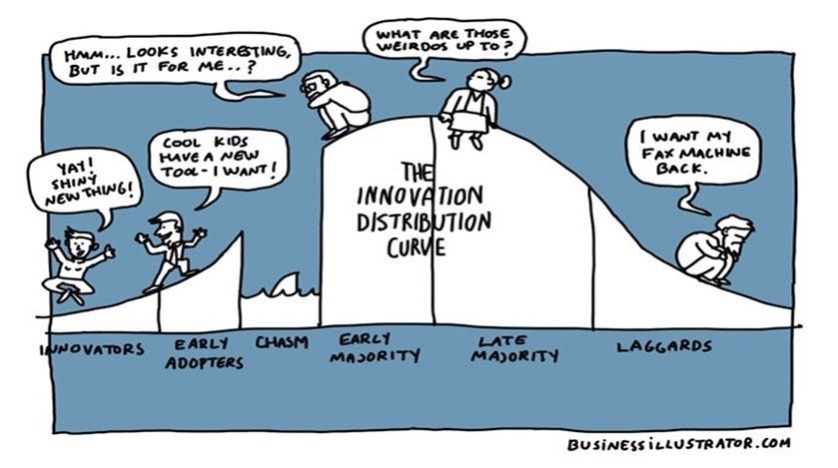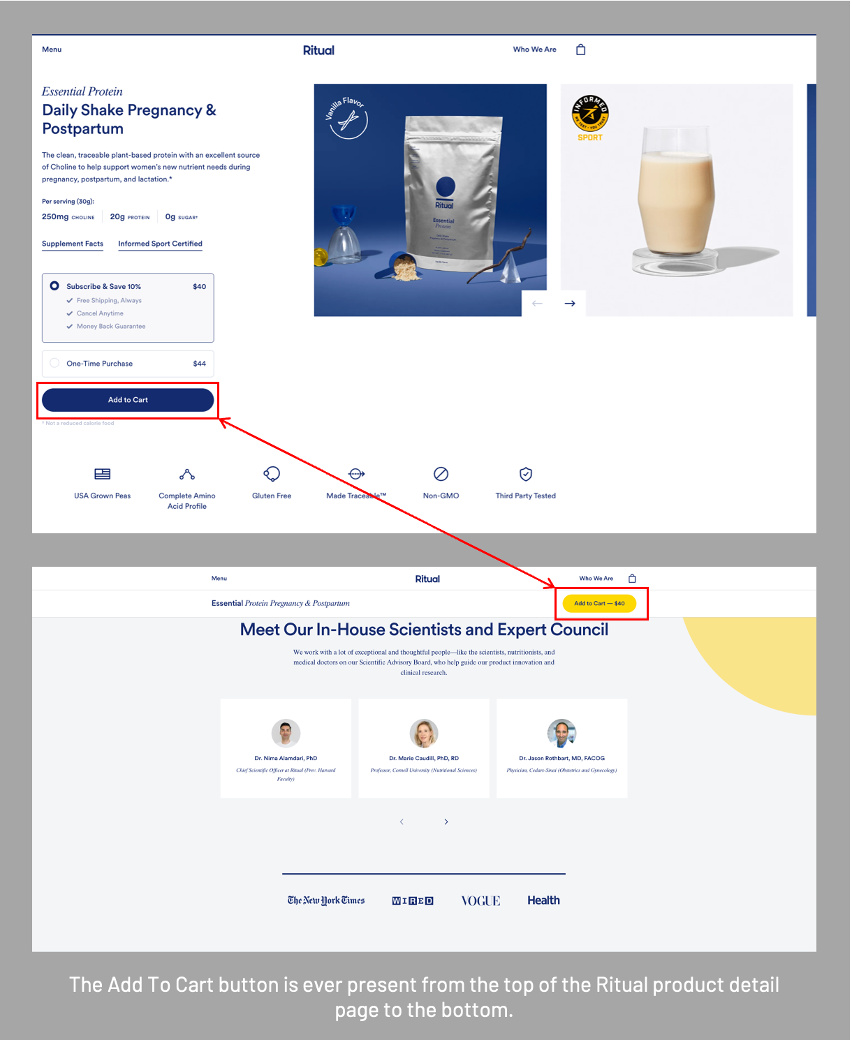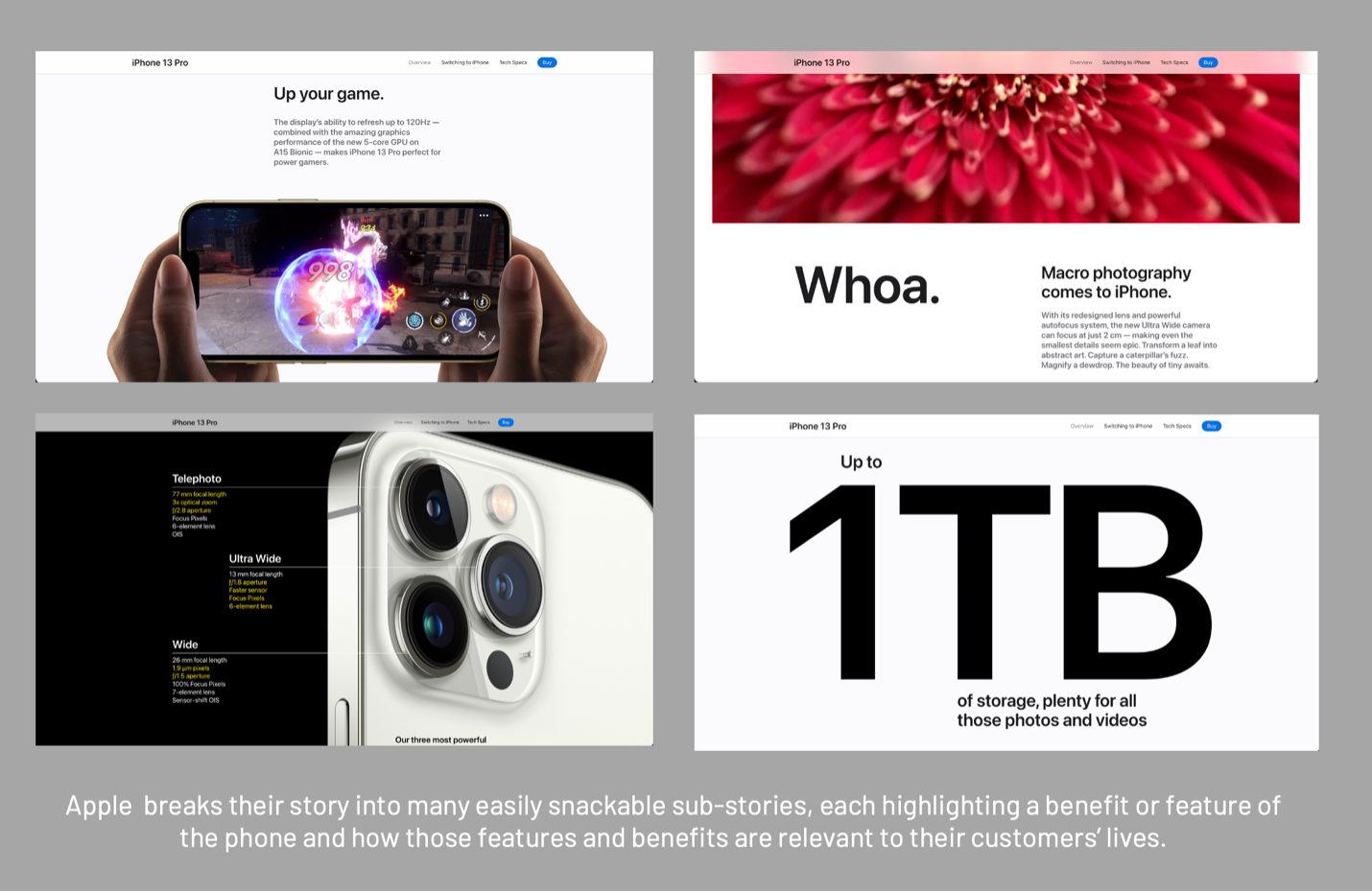Build DTC Product Detail Pages that work for your two most valuable customers: Scanners and Scrollers.

Brian Hennessy
Talkoot CEO and Co-Founder
I’m the first to admit I’ve never scrolled to the bottom of an iPhone product detail page before buying. And I’ve bought quite a few iPhones in my life.
You’ve likely never scrolled to the bottom of an iPhone PDP either.
So why does Apple have the longest, most immersive, and story-rich ecommerce product pages on the internet? And why has it been that way since at least back to the 2013 release of the iPhone 5?
Heatmaps don’t tell the whole story. I don’t have access to Apple’s heatmaps, but I’d guess the data tells them what it tells most brands: The vast majority of shoppers scan the product information quickly before hitting the buy button. Few shoppers scroll to the bottom of their meticulously crafted product pages. This is exactly why most brands build their product page experience for scanners.
The truth is, both scanners and scrollers are critical to DTC success. But for very different reasons. And they require different experiences to be an effective ally of your brand.
The value of Scanners is obvious. Scanners provide the bulk of your attributable sales. Better yet, they don’t require lots of expensive-to-produce content to buy. At first glance, it might seem like Scanners are your most important and easy to convert customer.
Scrollers are far more valuable than their numbers suggest. Though there are fewer of them, scrollers of your product pages punch above their weight in terms of influence. We call them scrollers. Malcolm Gladwell calls them Mavens. Seth Godin calls them Sneezers. But to really understand the power they have to make or break a brand, it’s best to go back to the pioneering work of Everett Rogers on how ideas spread.
In his 1962 book Diffusion of Innovations, Rogers divides society into five different social groups: Innovators, Early Adopters, Early Majority, Late Majority and Laggards. Each of these has a role to play in how ideas spread (or don’t) through culture.
NOTE: Our model leaves out the Innovators since Innovators aren’t consumers. Innovators are the creators of the innovation, not the consumers.

When you look at these groups’ shopping behavior, they collapse down to just two types of shoppers: Scrollers and Scanners. Early Adopters scroll. The rest of us—from early adopters to laggards—scan.
Because scrollers scroll, scanners can scan. It’s these Early Adopters who do the homework on your brand and product for the rest of us. They are often your most loyal, excited, and influential customers. Their knowledge of the space and excitement about what you’ve created is what sets the chain of influence in motion.
Thanks to our scrolling friends, we scanners have all the confidence and social proof we need to buy. When we get to the product page, we just need to confirm the critical details to make sure this is indeed the product our influential friend was so excited about.
These Early Adopters are essential for any idea to spread—be it a new product, technology, or brand. They’re always on the lookout for what’s next. And they’re always testing and recommending those new things to friends and followers.
For these Early Adopters, story is the currency they trade for influence. When they pore over your product page, they’re hunting for all the juicy details that make your product an interesting story they can tell their friends.
Long, content-rich product pages like Apple’s provide them with a ready-made story to spread among the scanners in their network.
Scrollers are everywhere, shopping every product category. Apple may have begun the long format trend. But more and more brands from more and more categories are adopting this deep, immersive, and visually rich style of product storytelling on their PDP.
Earthbreeze, a young but quickly growing DTC laundry detergent brand, has seen a lot of success with this PDP strategy.
So have DTC athletic apparel brands, supplements, backpacks, coolers and many more. These days there’s hardly a category where you won’t find a DTC brand building this kind of epic product page.
So how do you design for both scrollers and scanners? The key is to design product detail pages that satisfy scrollers but don’t frustrate scanners.
1. Don’t make scanners scroll. Don’t make scrollers scan.
The first 10% of a product detail page should be devoted to the 90% of your audience who don’t want to scroll. They’ve already been pre-sold by their scroller friends. Give them just the details needed to click the buy button.
The other 90% of the real estate on your product page should be devoted to the most loyal and excited 10% of customers: your scrollers.

2. Add a floating buy button.
If it’s possible within your design theme, consider featuring a floating buy button, like Apple or Ritual, that allows customers to add to cart whenever they feel they’ve gathered enough information to buy.
If your theme doesn’t allow a floating buy button, consider putting one at the top of the page for scanners, and one at the bottom for scrollers.

3. Tell stories.
Like bees spread pollen, Scrollers spread stories. Scrollers not only need to know what you make. They need to know how and why you made it and who you made it for. A great product story isn’t a story about a product. It’s a story about a person with a challenge and how they solved that challenge using a product.

4. Snackable product content.
Whether you’re a scroller or scanner, nobody likes to slog through long paragraphs of copy. Instead of one long product story, break that story into several consumable chunks, each devoted to a single aspect of your product.

5. Contextual photography and video.
Help consumers get a better sense of what the product looks, feels and performs like in real life. How big is it? How does it fit? How do you use it? All these questions can be answered quickly and easily by placing your products within the context of how they’re actually used.
6. Different content types for different learning styles.
Provide lots of different content types—videos, photography, written words—that help different learners consume your product story in a way that works for them. Remember that not all shoppers engage with content the way you do.
Whether or not your ecommerce experience requires more in-depth product pages isn’t a function of whether you have a highly technical or difficult-to-purchase product. What matters is whether or not you want to build a strong, sustainable direct to consumer channel that inspires influential early adopters.
Your product copy shouldn’t just sell to average customers. It should also arm your most loyal and excited customers with the story you want to spread about your product. If you give them the stories they need, they’ll do much of the heavy lifting to promote your products and elevate your brand.
